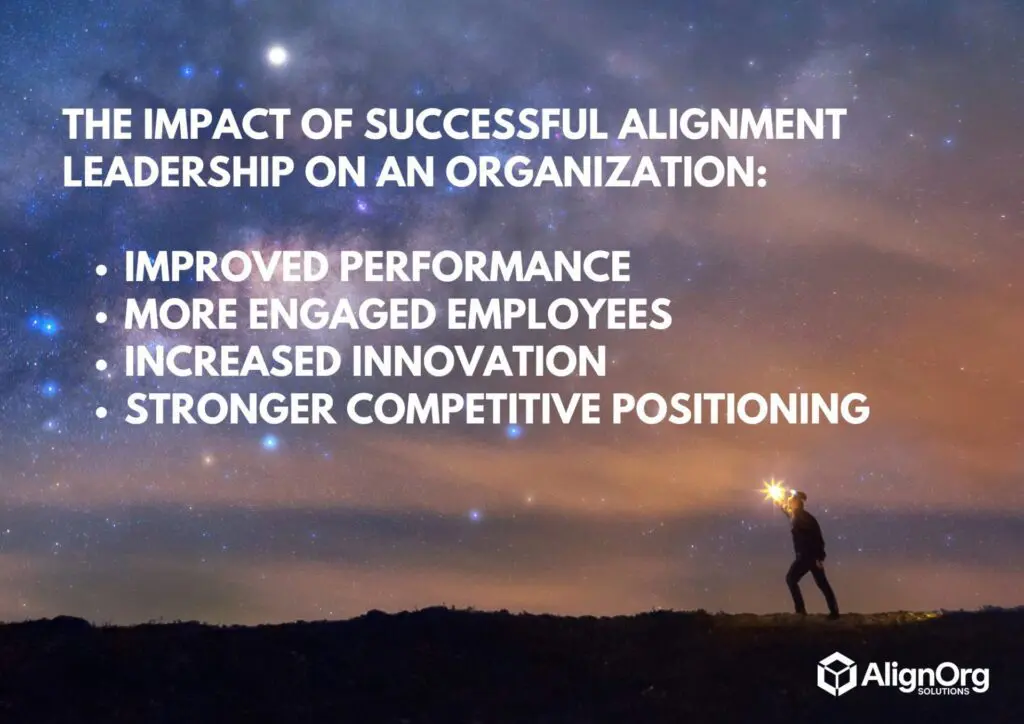In today’s rapidly evolving business landscape, organizations must adapt quickly to stay competitive. One of the most critical roles in this process is that of the Alignment Leader®. This pivotal position is responsible for ensuring that an organization’s structure, processes, and culture are in sync with its strategic goals. Let’s explore why alignment leadership is crucial and why prescriptive organization design is essential when realigning your organization.
The Role of an Alignment Leader®
An Alignment Leader® is tasked with creating and maintaining coherence between an organization’s strategy, capabilities, and architecture. This leader works to ensure that every aspect and organizing choice of the organization – from its business units to individual teams – is working in harmony towards delivering the organization’s strategy.
At AlignOrg Solutions, we compare this challenge to solving a Rubik’s Cube, where adjusting one aspect can easily disrupt the others. This analogy highlights the interconnected nature of organizational elements and the need for a holistic approach to alignment. Strategy provides a destination and great design marks the path, but ultimately, it falls on the Alignment Leader® to guide their organization to success. Our role is to help you become leaders who architect, communicate, exemplify and facilitate sustainable change.
The primary responsibilities of alignment leadership include:
- Providing clear direction and purpose
- Fostering a culture of trust and collaboration
- Ensuring effective communication across all levels
- Identifying and addressing misalignments
- Driving organizational change and adaptation
The Importance of Prescriptive Organization Design
When realigning an organization, it’s not enough to simply make incremental changes. A prescriptive approach to organization design is crucial for several reasons:
Strategic Focus
Prescriptive organization design ensures that the new structure directly supports the organization’s strategic goals. It helps create a clear line of sight from individual roles to the overall mission. Through organization design, we can drive growth and marketplace success, empower transformational change, and foster a differentiation advantage.
Efficiency and Effectiveness
By carefully designing each aspect of the organization, you can optimize processes, reduce redundancies, and improve overall operational efficiency. In fact, it isn’t about growing or cutting, it’s about aligning choices to the strategy to enable growth, while driving the right efficiencies.
Clarity and Accountability
A well-designed organization has clear roles, responsibilities, and reporting structures. This clarity enhances accountability and reduces confusion.
Adaptability
Prescriptive design allows for the creation of flexible structures that can adapt to future changes in the business environment.
Cultural Alignment
Organization design isn’t just about structure; it’s also about shaping the culture. A prescriptive approach ensures that cultural elements are intentionally designed to support the organization’s goals. Defining the leadership behaviors that are aligned with the organization choices is critical to long-term organization success.
The end result? An organization that’s more streamlined and effective, with the ability to deliver distinctive capabilities and keep costs in check.
Implementing Prescriptive Organization Design
To effectively implement prescriptive organization design, Alignment Leaders should follow these steps:
- Assess Current State (Diagnose): Thoroughly analyze the existing organization structure, processes, and culture. Begin to identify where current choices are not in alignment.
- Define Future State: Clearly articulate the desired future state, aligned with strategic objectives.
- Identify Gaps: Determine the differences between the current and future states.
- Design Solutions (Design): Create detailed plans for structural changes, process improvements, and cultural shifts.
- Implement Changes (Deliver): Roll out the new design in a phased intentional approach, ensuring proper communication and support throughout. Employees should be able to say, “I am in my new role,” “I know how to do my new role,” and “I have the tools to do my new role.”
- Monitor and Adjust: Continuously evaluate the effectiveness of the new design and adjust as needed. Continuous assessment of the organization’s choices and their alignment to strategy is the most critical initial responsibility of the Alignment Leader®.
As you can imagine, knowing precisely how and when to grow can be challenging. Many organizations start with a promising new design but fail to bring it to reality. Journey management can be a critical alignment leadership tool to move organization transformations forward.
The Rubik’s Cube of Organizational Alignment
When we talk about organizational alignment, we like to think of it as a Rubik’s Cube – that iconic six-sided puzzle that celebrated its 50th anniversary this summer. As with the Rubik’s Cube, our goal is to align all six sides of an organization. When this is achieved, we call it, “Mastering the Cube.”
This model identifies six key elements of an organization’s choices that must align with strategy and thereby create critical differentiating and enabling capabilities necessary to deliver the strategy:
- Work
- Governance & Structure
- Information & Metrics
- People & Rewards
- Continuous Improvement
- Leadership and Culture
Just as with a Rubik’s Cube, making changes to one element will affect all the others. This interconnectedness underscores the need for a holistic, prescriptive approach to organization design.
The Impact of Effective Alignment Leadership
When Alignment Leaders successfully implement prescriptive organization design, the benefits can be significant:
– Improved organizational performance and agility
– Enhanced employee engagement and productivity
– Better alignment between strategy and execution
– Increased innovation and adaptability
– Stronger competitive positioning in the market
Perhaps my AlignOrg Solutions colleague Reed Deshler said it best, “There is a truism we quote frequently in our business: organizations are perfectly designed to get the results they’re getting.”

Shaping the Future
The role of an Alignment Leader® is crucial in today’s dynamic business environment. By employing prescriptive organization design and viewing the organization as a complex, interconnected system like a Rubik’s Cube, these leaders can ensure that their organizations are not just reacting to change, but proactively shaping their future. As businesses continue to face unprecedented challenges and opportunities, the ability to align all aspects of an organization will be a key differentiator between those who thrive and those who struggle to keep pace.





